Dear rocket friends
A few weeks ago we went on a field trip to Odense Skydiving Center for yet another parachute test. This time we tested the first Spica space capsule ballute and a minor modification to the main parachute’s reefing system. After some technical challenges, I have now managed to get data out of the data loggers and the result is extremely encouraging.
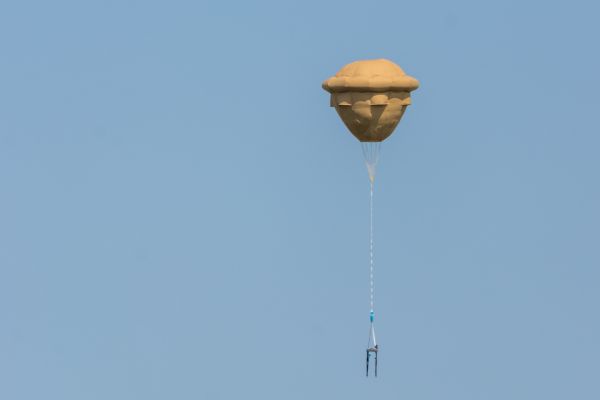
Photo: Henrik Jordahn
Spica ballute
In the video below you can hear my pre-flight expectations for the flight with the ballute. I expected a speed of 110 km/h, and preferably a little below.
and we basically hit bullseye.
The following graph shows the velocity and G-loads for the ballute on its descend from just under 2.5 km altitude. In these tests, I use an altitude at 1,500 meters as a reference point, as this is where the system is usually stabilized.
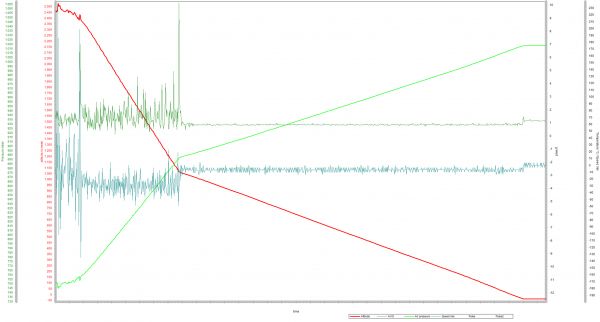
Graphics: Siemert.de / Mads Stenfatt
We could hardly have hit the target better, as we measured a 107 km/h speed at that time.
Now what?
This means that we are beginning to see the end of the tunnel in relation to determining the size of the ballute for the space capsule.
If we choose to put this specific version on the first space capsule, they will reach a speed of about 200 km/h at a height of four km, which is our target, relative to what speed we want to achieve when the main parachutes are coming out. However, to minimize G-forces earlier in the descend, we would like to be able to reduce the top speed before hitting the stratosphere, which is the altitude where we expect to receive the highest G-loads. To do that, we are now trying to see how much bigger a ballute we have the capacity to produce. But now we at least have the minimum requirements fulfilled.
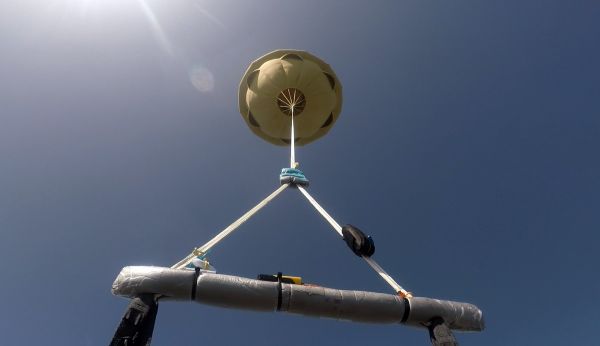
Photo: Ahmad Rahman
The main parachute
We also tested a small change to the main parachute opening system.
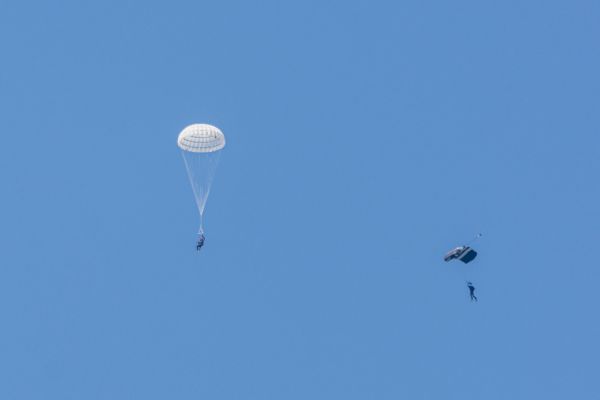
Photo: Henrik Jordahn
Compared to previous tests, we let the the first stage of the parachute opening sequence be a little smaller, which resulted in a more gentle opening. To better get an idea of the difference, I have merged the two images below, where you can see the first stage placed on top of the fully open parachute.
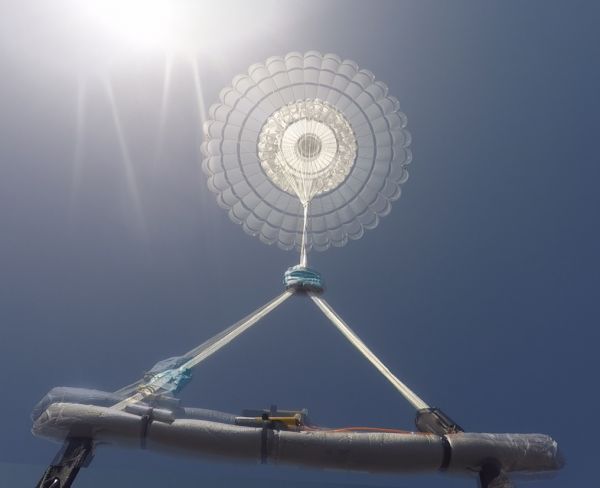
Photo: Ahmad Rahman
The idea of controlling how quickly the parachute opens is that we want to reduce the forces at which the space capsule slows down, thus reducing the risk of equipment damage and ultimately the astronaut.
The above composite image shows how we first let the parachutes unfold very little before gradually unfolding them completely. The consequence of this is that we reduce the braking forces from 6-7G to just below 3G. That may still sound like a lot, but by comparison I’ve measured the G-loads I’m exposed to, in three of my recent skydives, where I achieved terminal velocity before opening the parachute. In those three jumps I was exposed to 4.6G, 3.8G and 4.0G in my harness.
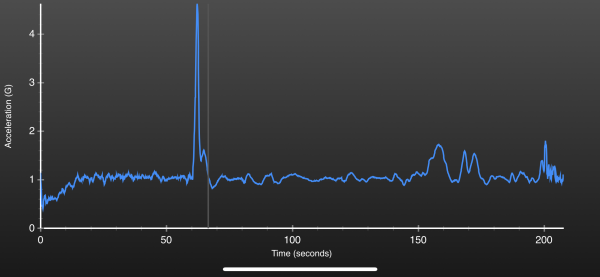
Photo: Mads Stenfatt
Obviously, such loads are not exactly comfortable, but it’s no problem at all to go to the next stage of the flight after the opening of the parachute.
Predicting the landing point of the space capsule
As we ultimately have to control the safety of an astronaut, we are also working to predict the movement of the space capsule through the atmosphere and the wind conditions that control the route it takes. Therefore, these leaps are also an exercise in refining these calculations.
Our challenge with these parachute tests is always to find an exit point from the airplane, from where the route back to the skydivers’ landing point is as short as possible, while not not risking any damage to third parties.
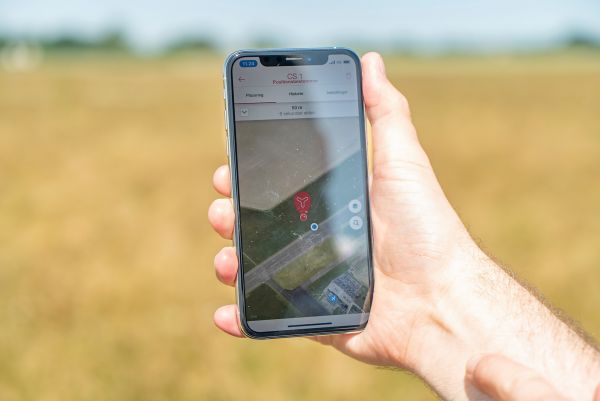
Photo: Sarunas Kazlauskas
When we look at the track of the ballute, we also managed to bring it to land within the airport area, almost exactly at the distance and direction we had expected from the exit point.
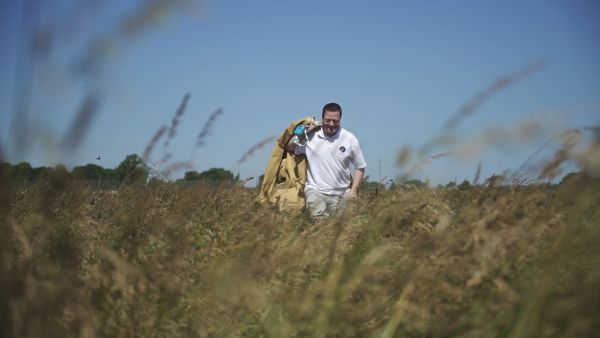
Photo: Sarunas Kazlauskas
with the main parachute it was a bit different: Instead of descending fully inflated after our test jumper left it, the parachute chose to collapse and thus fell a bit faster than expected, behaving a bit different than predicted. This was a good example on why we had taken such a scenario into account when planning the jump, because it simply landed in an open field.
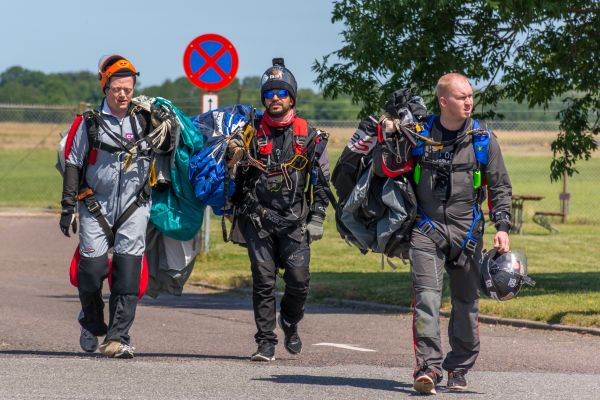
photo: Henrik Jordahn
While the three skydivers could walk back from testing the main parachute, Sarunas and Greta had to embark on a small adventure to find the main parachute, which had chosen to hide itself in the crops in a field.
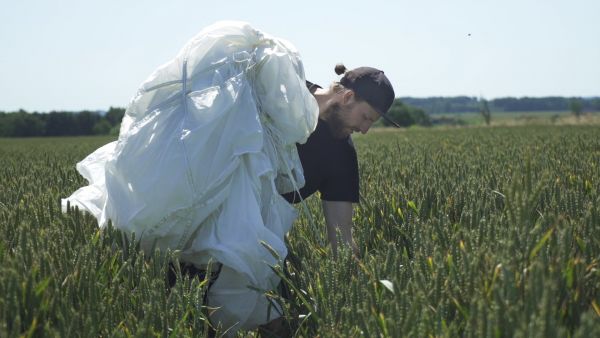
Photo: Greta Valvonytė
Speaking of reefing
In our collaboration with DARE, The Dutch university rocket group, we were recently given the opportunity to do a unique test, in the category “it could be fun to investigate …”.
DARE, helped us to investigate if, and if so by how much, a ballute can be reefed, in case we find it necessary to use that technique on that device as well.
We will give a full update on that at a later stage, when we have dived more into the details, but with the video below we demonstrated that there is at least an upper limit on how much it can be reefed, while still be stable 🙂
But more on that at a later date.
Help wanted!
The next thing I’m going to write about in the near future is in an area where we lack hands that can actually build stuff. More specifically I need help building some piping from a pressure vessel, through a valve system and into a balloon. It’s a relatively simple task, but maybe something that one of you readers can help us with? More details will follow, once I have a somewhat better overview of the details of the task …
Ad astra,
Mads




1 Comment
Christophe Arnoux · 7th September 2019 at 6:08 pm
Hi ! Not sure how I could help from France but I was the R&D engineer for the recovery system on a unmaned air vehicle landing under parachute and airbag.
Your project rings some bells to me…
So if you think I can be of any help on this project, just let me know. Regards.
Christophe.
Comments are closed.